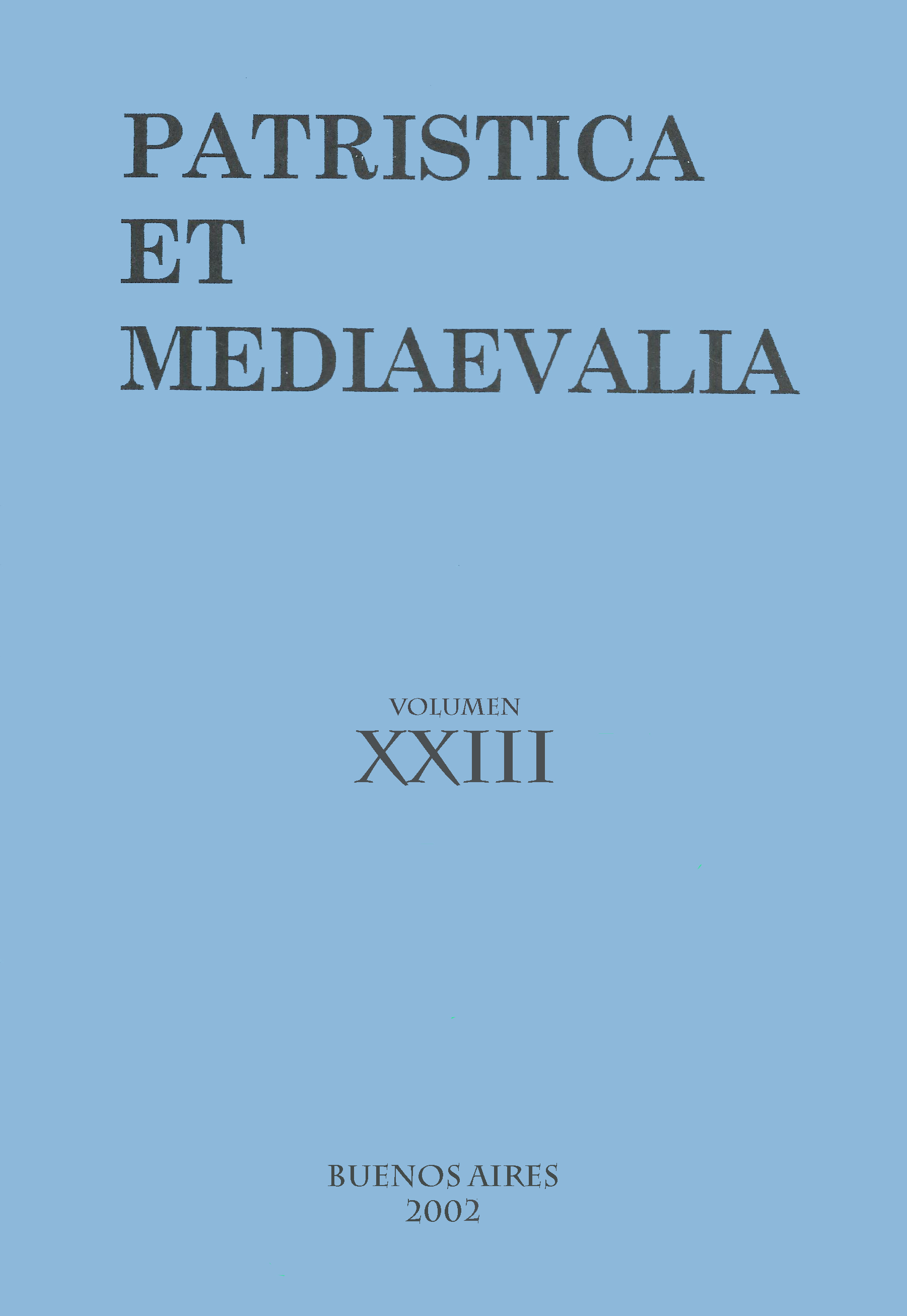On the Concept of Felicitas of the Ethica Noua in the Commentary of Paris Ms. 3804ª (1235-1240)
Abstract
Among the many commentaries that the Ethica Nicomachea aroused during its entry into the West in the 13th century, those of the first half are of interest because of the variety and heterogeneity of interpretations they provoked. The commentary contained in the Bibliothèque de Paris' Ms 3804ª, based on the Ethica noua in Latin translation of approximately 1220 of Book I of the Ethica Nicomachea, corresponds to this period.Downloads
References
Bertelloni, F. (1993). Loquendo philosophice-loquendo teologice: implicaciones ético-política de la Guía del Estudiante de Barcelona, A propósito de una reciente publicación de C. Lafleur. Patristica et Mediaevalia, 14, 21-40.
Celano, A. (1986). The ‘Finis hominis’ in the Thirteenth Century Commentaries on Aristotle’s Nicomachean Ethics. Archives d’historie doctrinale et littéraire du Moyen Âge, 53, 23-53.
Celano, A. (1986). The Understanding of the Concept of Felicitas in the pre-1250 Commentaries on the Ethics Nicomachea. Medioevo, 12, 29-54.
Gauthier, R. A. (1975). Le cours sur l’Ethica Noua d’un maître ès arts de Paris, 1235-1240. Archives d’histoire doctrinale et littéraire du Moyen Âge, 42, 71-141.
Lottin, O. (1939). Physhologie et morale à la Faculté des Arts de Paris aux approches de 1250. Revue NéoScolastique de Philosophie, 62, 182-212.
Wieland, G. (1997). L’émergence de l’éthique philosophique aux XIII siècle, avec une attention spéciale pour le ‘Guide de l’étudiant’ parisien’. En Lafleur, C. (ed.). L’enseignement de la philosophie au XIIIe siècle, Actes du colloque international. Turnhout: Brepols, 167-180.
1. The authors who publish in this magazine accept the following conditions:
-
They retain the copyright and grant to the magazine the right of the first publication, with the work registered under the Attribution-ShareAlike 4.0 International License that allows third parties to use what is published as long as they mention the authorship of the work and the first publication in this magazine.
-
They can make other independent and additional contractual agreements for the non-exclusive distribution of the version of the article published in this magazine (eg. include it in an institutional repository or publish it in a book) provided that they clearly indicate that the work was first published in this journal.
-
They are allowed and recommended to publish their work on the Internet (for example on institutional or personal pages).
2. AutoArchive Conditions. Authors are allowed and encouraged to distribute post-print electronic versions of their manuscripts because it promotes their circulation, a possible increase of quotation and a major reach among the Academic community. Color RoMEO: blue.













